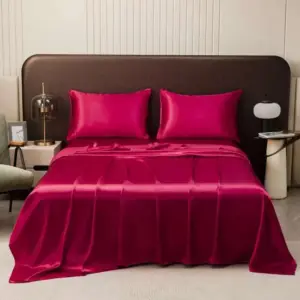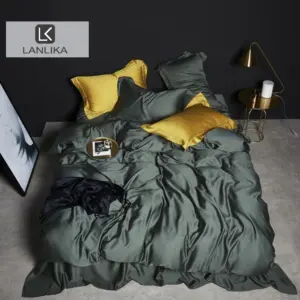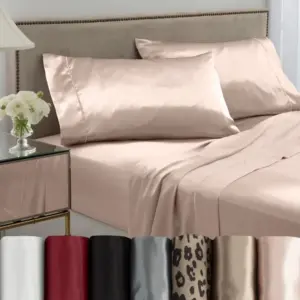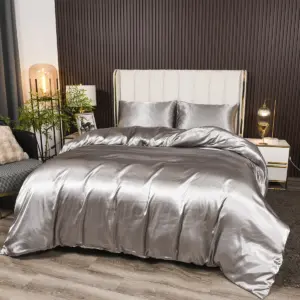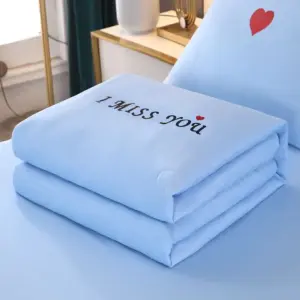Introduction: Understanding the Value of Quality Silk
Silk stands as one of nature’s most exquisite gifts—a premium natural fiber renowned for its lustrous appearance, smooth texture, and remarkable comfort. When you invest in silk products, you’re not simply purchasing fabric; you’re acquiring a material with thousands of years of history that continues to symbolize luxury, comfort, and sophistication.
Understanding silk quality matters significantly because it directly impacts your investment. High-quality silk offers superior durability, maintaining its beauty for years rather than months. It provides enhanced comfort benefits, including better temperature regulation, gentler contact with skin, and improved sleep quality. These differences justify the sometimes substantial price variations between premium and lower-quality silk products.
Today’s market presents challenges for consumers seeking authentic high-quality silk. With synthetic alternatives, blended fabrics, and varying quality standards, distinguishing genuine premium silk requires specific knowledge. This guide will equip you with understanding of key quality metrics (like Momme weight and grade), practical tests for authentication, and insights into different silk varieties.
The knowledge you gain about amazing benefits of mulberry silk sheets and other silk products will transform you from an uncertain shopper to a confident consumer capable of identifying true quality and making purchases that deliver lasting value and satisfaction.
The Science Behind Silk Quality: Key Metrics to Know
When evaluating silk quality, specific objective measurements provide reliable indicators of what you can expect from the fabric. These scientific metrics form the foundation of quality assessment in the silk industry and directly correlate to how the silk will perform in real-world use.
Key quality metrics include:
- Density measurements (Momme weight)
- Fiber grade classifications
- Uniformity assessments
- Purity evaluations
- Tensile strength tests
Understanding these measurements empowers you as a consumer to look beyond marketing claims and make truly informed decisions. While manufacturers rely on these metrics to classify their products, you can use the same knowledge to ensure you receive the quality you’re paying for.
Both scientific measurements and practical assessments work together to create a complete picture of silk quality. The science provides objective standards, while your senses confirm the tangible benefits. Learning more about what does momme mean in silk builds the foundation for recognizing exceptional quality in any silk product you consider.
Momme Weight: The Definitive Measure of Silk Density
Momme weight (mm) represents the traditional Japanese measurement system for silk density. Technically, it measures the weight in pounds of 100 yards of silk that is 45 inches wide. This measurement provides crucial information about the silk’s thickness, durability, and opacity.
Higher Momme weights indicate more silk has been used per square yard, resulting in a denser, more durable fabric. Lower Momme silks feel lighter and more delicate but may be less durable for daily use items. The weight directly influences how the fabric drapes, feels against your skin, and holds up over time.
Silk products generally fall into these Momme ranges:
- Low: 6-12 mm (lightweight, somewhat transparent)
- Medium: 13-18 mm (balanced weight, moderate opacity)
- High: 19-30 mm (substantial weight, excellent durability)
Different silk products require different Momme weights to perform optimally:
| Product Type | Ideal Momme Range | Characteristics |
|---|---|---|
| Scarves & lightweight garments | 6-12 mm | Floaty, delicate, breathable |
| Blouses & shirts | 12-16 mm | Good drape, moderate durability |
| Sleepwear & pillowcases | 19-22 mm | Durable, substantial feel |
| Luxury bedding | 22-30 mm | Maximum durability, luxurious weight |
The relationship between how momme affects silk softness is nuanced—while higher Momme often feels more substantial, the actual softness depends on multiple factors including the silk grade and processing methods.
How to Verify Momme Claims When Shopping
Unfortunately, some retailers misrepresent Momme weight to command higher prices. Being able to verify these claims helps ensure you receive the quality you’re paying for.
Practical methods to estimate or verify Momme claims include:
- Weight test: A 1-yard square of 19mm silk should weigh approximately 4.3 ounces
- Light test: Hold silk up to light—higher Momme will be less transparent
- Fold test: Higher Momme silk feels more substantial when folded between fingers
- Price assessment: Extremely low prices for claimed high Momme silk should raise suspicion
The relationship between price and Momme is generally proportional—higher Momme silk requires more raw material and thus costs more to produce. Be particularly cautious of claims advertising 25+ mm silk at bargain prices, as the material costs alone make such pricing economically improbable.
Understanding the relationship between thread count vs silk quality helps provide additional context when evaluating silk products, especially since thread count terminology sometimes appears alongside Momme measurements in product descriptions.
Silk Grade: Understanding Fiber Quality and Purity
Silk grading systems provide insight into the qualitative aspects of silk fibers, focusing on characteristics that Momme weight doesn’t capture. The traditional grading system uses letters (A, B, C) with A representing the highest quality. Premium silks often carry additional designations such as 6A, 5A, or 4A, with 6A representing the absolute finest quality available.
The grade primarily reflects three critical factors:
- Fiber length: Longer fibers create smoother, more durable fabric with fewer weak points
- Fiber uniformity: Consistent fibers create even texture and appearance
- Fiber purity: Minimal defects, knots, or irregularities
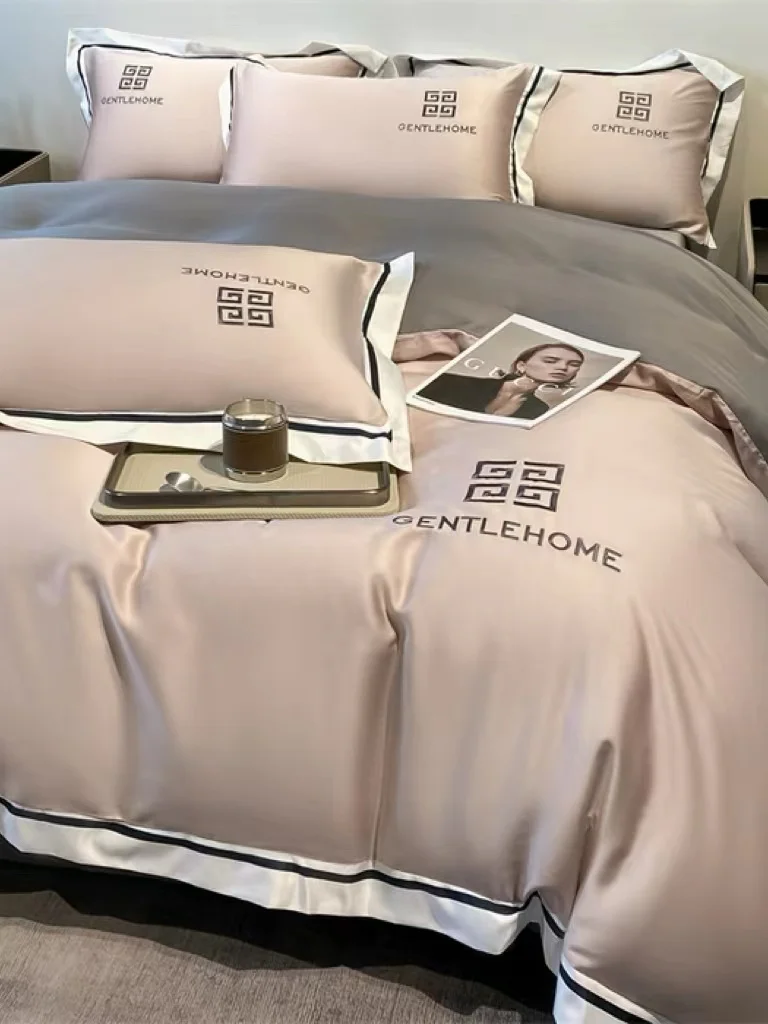
Premium grade silks offer distinct characteristics:
- 6A: Exceptionally long fibers with perfect uniformity, harvested from silkworms raised in ideal conditions with strictly controlled diet. Incredibly smooth with perfect consistency.
- 5A: Very high quality with minimal imperfections, excellent luster and uniformity with only occasional minor variations.
- 4A: Good quality with some slight variations in thickness or texture, still offers excellent performance but with subtle inconsistencies.
- 3A and below: Increasingly shorter fibers with more noticeable imperfections, less uniform appearance, and reduced durability.
Grade significantly impacts both price and longevity, with higher-grade silks maintaining their beauty through more washing cycles and showing greater resilience against pilling or fiber breakdown. For the ultimate in quality and luxury, exploring 100% silk sheets with top grades offers an unmatched sleep experience.
Types of Silk: From Mulberry to Wild Varieties
Silk varieties fall into two main categories—cultivated silks from domesticated silkworms and wild silks harvested from undomesticated species. Each type offers distinct characteristics that influence quality assessment.
Mulberry silk represents the gold standard of cultivated silk, comprising over 90% of the world’s silk production. Produced by Bombyx mori silkworms that feed exclusively on mulberry leaves, this silk features:
- Uniformly white fibers before dyeing
- Exceptionally fine, strong filaments
- Smooth, soft texture
- Excellent temperature regulation
- Superior durability when properly cared for
Other notable silk varieties include:
- Tussah (Wild) Silk: Produced by wild silkworms feeding on oak and juniper leaves, featuring:
- Natural golden/beige coloration that resists dyeing
- Shorter fibers creating textured fabric
- More irregular appearance but unique character
Coarser feel but excellent durability
Eri Silk: Known as “peace silk” because it’s harvested after the moth emerges:
- Softer, more cotton-like texture
- Less sheen than mulberry silk
- Excellent thermal properties
More matte appearance
Muga Silk: Rare golden-yellow silk from Assam, India:
- Natural golden color that improves with washing
- Extremely durable (can last over 100 years)
- Highest tensile strength among natural silks
- Glossy texture with a metallic sheen
Mulberry silk sheets offer the optimal combination of luxury and durability for bedding applications, while understanding differences between bamboo vs mulberry silk fabric helps contextualize silk’s unique properties compared to other premium bedding materials.
Simple Tests to Identify Authentic Silk at Home
Distinguishing authentic silk from synthetic alternatives protects your investment and ensures you experience genuine silk’s unique benefits. These practical tests can help verify authenticity before or after purchase.

Visual Inspection Test
* Genuine silk has a subtle sheen that changes with lighting angles
* Look for natural irregularities rather than perfect uniformity
* Real silk has a deep, translucent glow rather than artificial shine
* Check for an irregular weave pattern under magnificationTouch Test
* Authentic silk feels cool to the initial touch but quickly warms
* When rubbed between fingers, real silk creates a distinctive rustling “scroop” sound
* Genuine silk feels smooth but not slippery
* The fabric should feel substantial yet incredibly lightweightRing Test
* Pull the fabric through a ring of moderate size (like a wedding band)
* Real silk compresses easily and pulls through smoothly
* Synthetic fabrics often resist or create friction
* Silk should emerge from the ring with minimal wrinklingWater Absorption Test
* Place a small drop of water on the fabric
* Genuine silk absorbs water gradually, creating a dark spot
* Synthetic alternatives repel water or allow it to bead up
* The water spot on real silk dries relatively quicklyBurn Test (Exercise caution!)
* Cut a few threads or use an inconspicuous area
* Ignite the fibers with a lighter or match
* Real silk burns slowly with a smell similar to burning hair
* The ash from burned silk should be black, crushable, and powdery
* Synthetic fibers often melt rather than burn and produce plastic-like odors
Finding luxury silk bedding sets that pass these authenticity tests ensures you’re investing in genuine silk products that will deliver the expected benefits and longevity.
Visual Indicators of Silk Quality
Beyond basic authentication, visual assessment helps identify superior silk quality. Train your eyes to recognize these indicators of exceptional silk:
Weave Consistency: High-quality silk displays even weaving with minimal variations in tension or density. Examine the fabric under good lighting for consistency.
Color Uniformity: Premium silk accepts dye evenly, resulting in consistent coloration throughout. Look for any streaking, blotching, or uneven color distribution.
Characteristic Sheen: Fine silk exhibits a soft, multi-dimensional luster rather than a flat shine. The luster should change subtly as the fabric moves.
Edge and Seam Quality: Examine hems, edges, and seams for consistent, tight stitching. Quality silk products feature meticulous finishing details.
Surface Irregularities: While some natural variation is normal, premium silk should be free of slubs, knots, or noticeable imperfections.
The finest mulberry silk bedding sets demonstrate these visual quality indicators consistently throughout the product, from the fabric itself to the finishing details.
The Feel Factor: Tactile Assessment of Silk Quality
The tactile experience of silk provides perhaps the most intuitive measure of its quality. High-quality silk creates a distinctive sensory experience that inferior products simply cannot replicate.
Premium silk feels cool to the initial touch but quickly warms to body temperature, creating a “second skin” sensation. The fabric should feel remarkably smooth without being artificially slippery—a key difference between genuine silk and synthetics. When rubbed between fingers, authentic high-quality silk produces a subtle crinkling sensation and the characteristic “scroop” sound.
Temperature regulation represents another tactile quality indicator. Superior silk adjusts to your body temperature, feeling cool in warm conditions and warm in cool conditions. This property results from the protein structure of natural silk fibers and their ability to wick moisture.
Developing a “feel memory” for authentic silk takes time but becomes invaluable for quality assessment. Handle known high-quality silk products whenever possible to train your tactile perception. The sensory experience of the complete guide to mulberry silk bed sheets offers excellent insights into what premium silk should feel like against your skin.
Beyond Basics: Advanced Quality Indicators for Silk Connoisseurs
For those seeking deeper understanding, several nuanced factors significantly impact silk quality beyond the basic metrics of Momme and grade.
Production techniques fundamentally influence silk’s characteristics:
* Reeling Methods: Hand-reeled silk maintains longer fiber integrity compared to machine-reeled silk, resulting in stronger fabric with fewer weak points.
* Degumming Process: Silk naturally contains sericin (silk gum). The percentage removed during processing affects the fabric’s feel and luster. Premium silk undergoes careful degumming that removes enough sericin for softness while preserving fiber strength.
* Weaving Techniques: Different weave patterns create distinct characteristics:
* Charmeuse weave: Lustrous front with matte back, excellent drape
* Habotai weave: Lightweight with balanced sheen on both sides
* Crepe de chine: Textured surface with excellent weight and movement
Finishing processes further distinguish premium silk:
* Sand washing creates exceptionally soft texture
* Calendering enhances luster through controlled pressure
* Proper tensioning during production ensures dimensional stability
Understanding the intricacies of selecting silk weaves for luxury provides deeper appreciation for why seemingly similar silks may offer dramatically different quality experiences and justifiably different price points.
Decoding Silk Product Labeling and Certifications
Full-size Silk Sheets, King Size Silk Sheets, Queen Size Silk Sheets, Twin Size Silk Sheets, Washable Silk Sheets
Price range: $95.95 through $178.37 Select options This product has multiple variants. The options may be chosen on the product page100% Silk Sheets, Green Silk Sheets, King Size Silk Bedding Set, Mulberry Silk Bedding Sets, Queen Size Silk Bedding Set
Price range: $1,246.21 through $1,615.22 Select options This product has multiple variants. The options may be chosen on the product pagePink Silk Sheets, Twin Size Silk Sheets
$171.80 Select options This product has multiple variants. The options may be chosen on the product pageFull-size Silk Sheets, Pink Silk Sheets
$136.31 Select options This product has multiple variants. The options may be chosen on the product pageGrey Silk Sheets, Silk Sheet and Pillowcase Set
Price range: $88.20 through $146.64 Select options This product has multiple variants. The options may be chosen on the product pageBamboo Silk Sheets, Cooling Silk Sheets
Price range: $130.76 through $177.80 Select options This product has multiple variants. The options may be chosen on the product page
Navigating silk product labels requires understanding specific terminology and recognizing meaningful certifications that verify quality claims.
Important certifications to look for include:
OEKO-TEX Standard 100: Certifies the product is free from harmful substances and safe for human use, including testing for regulated and non-regulated chemicals.
Silk Mark: Issued by the Silk Mark Organization of India, guarantees authentic natural silk content and helps distinguish from synthetic alternatives.
GOTS (Global Organic Textile Standard): For organic silk, ensures environmentally and socially responsible production from cocoon to finished product.
Watch for misleading terminology that suggests silk quality without guaranteeing it:
* “Silky” or “silk-like” typically indicates synthetic materials
* “Silk-touch” or “silk-feel” usually means artificial treatments on non-silk fabric
* “Satin” describes a weave pattern, not material content (can be silk or synthetic)
* “Art silk” is industry shorthand for “artificial silk”
Legitimate silk products clearly state actual silk content percentage and typically include care instructions specific to natural silk. The ultimate guide to buying luxury silk bedding provides additional insights into interpreting product information correctly.
How to Care for Silk to Maintain Its Quality and Extend Lifespan
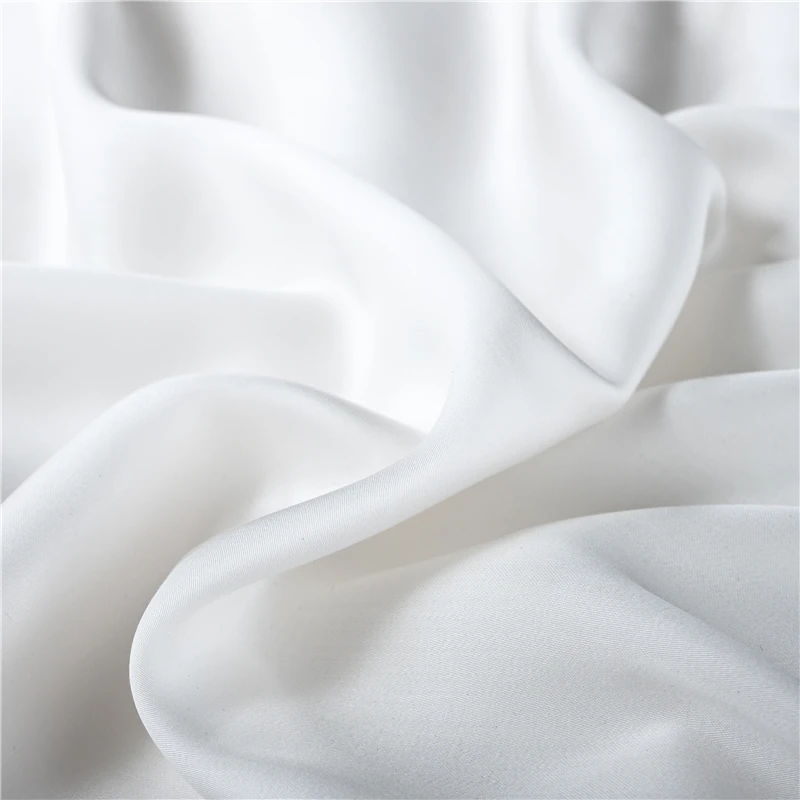
Proper care dramatically extends silk’s lifespan and preserves its quality characteristics. Even the finest silk will deteriorate prematurely without appropriate maintenance.
Essential silk care guidelines include:
Washing: Hand wash in cool water (below 86°F/30°C) using pH-neutral soap specifically formulated for silk. Avoid standard detergents, which can damage silk fibers.
Drying: Never wring silk. Instead, gently press water out between towels, then lay flat or hang to dry away from direct sunlight, which can fade colors and weaken fibers.
Storage: Store silk in cool, dry places using breathable cotton bags rather than plastic, which can trap moisture. Avoid prolonged folding along the same lines to prevent permanent creases.
Ironing: If necessary, iron silk while slightly damp on low heat (silk/low setting), always with a pressing cloth between the iron and fabric, and iron on the reverse side when possible.
Common mistakes that damage silk include:
* Using hot water, which can shrink and weaken fibers
* Applying bleach or strong detergents, which break down protein fibers
* Exposing to direct sunlight during drying or storage
* Using high heat when ironing
With proper care, silk pillowcases and other silk products maintain their luxurious feel and appearance for many years, making quality silk a sound long-term investment.
Is High-Quality Silk Worth the Investment? A Cost-Benefit Analysis
When considering silk quality levels, the cost-benefit analysis extends beyond the initial price to include longevity, performance, and satisfaction over time.
High-quality silk typically offers superior durability, with premium products often lasting 3-5 times longer than lower-quality alternatives. This longevity significantly impacts the true cost of ownership. For example, a $300 high-grade silk sheet set that lasts eight years ($37.50/year) may represent better value than a $100 lower-quality set requiring replacement every two years ($50/year).
Performance differences also justify price variations:
* Higher-grade silk maintains its luster and soft feel through more washing cycles
* Premium silk resists pilling and fiber breakdown
* Quality silk provides more consistent temperature regulation
* Higher Momme silk typically offers improved durability against regular use
The intended use should guide your quality decisions. For items used daily (bedding, pillowcases), investing in higher quality usually delivers better long-term value. For occasional-use items, mid-range quality may provide a satisfactory balance of performance and cost.
Understanding why choose mulberry silk sheets helps contextualize the benefits that make quality silk worth the investment for many consumers, particularly for items that directly contact skin during extended periods.
Common Questions About Silk Quality
Does higher Momme always mean better silk?
Not necessarily. While higher Momme indicates denser, potentially more durable fabric, quality depends on multiple factors. A 16mm high-grade silk may feel more luxurious than 22mm low-grade silk. The optimal Momme depends on the product’s purpose—lighter weights work better for scarves and summer garments, while higher weights excel for bedding.
Can silk quality change after washing?
Yes. Poor-quality silk may deteriorate noticeably after washing, with decreased luster, rougher texture, or dimensional changes. High-quality silk typically maintains its characteristics when properly cleaned. Some premium silk actually improves slightly after the first gentle washing as the fibers relax.
Is wild silk lower quality than cultivated silk?
Not lower—just different. Wild silks like Tussah offer unique characteristics including natural colors, more texture, and excellent durability. They’re not inferior to cultivated silks like Mulberry but serve different purposes and aesthetic preferences. Wild silk typically has shorter fibers and more variation.
Does silk naturally yellow with age?
Quality silk can develop slight yellowing over many years, but premature or significant yellowing indicates either poor quality or improper storage (exposure to chemicals, sunlight, or cigarette smoke). Proper storage in acid-free tissue and breathable containers minimizes aging effects.
Is handmade silk always better than machine-made?
Handmade silk often features more careful attention to detail and traditional techniques that preserve fiber integrity, but modern machine production can also achieve excellent quality with greater consistency. The production method matters less than the quality of the raw materials and the standards applied during manufacturing.
For practical application of this knowledge, exploring our selection of silk sheets demonstrates quality variations across different types and grades.
Conclusion: Becoming a Discerning Silk Connoisseur
Armed with knowledge of key quality indicators—Momme weight, grade, and silk type—you’re now equipped to make informed decisions about silk purchases. Understanding that quality silk represents an investment in comfort and durability helps justify the higher cost of premium products.
The practical tests we’ve explored provide tangible methods to verify authenticity and quality whether shopping in person or evaluating purchases at home. Remember that combining multiple assessment methods—visual inspection, touch evaluation, and objective metrics—yields the most accurate quality assessment.
Trust your senses when evaluating silk. Quality silk should feel distinctly cool initially but warm quickly to your touch. It should drape beautifully and exhibit a subtle, changing luster rather than a static shine. The fabric should feel substantial yet incredibly lightweight.
Your ability to recognize and appreciate fine silk enhances not just your purchasing decisions but your enjoyment of this extraordinary natural fiber. The discerning silk connoisseur understands that quality silk isn’t merely a luxury—it’s an experience that rewards the senses and stands the test of time.


